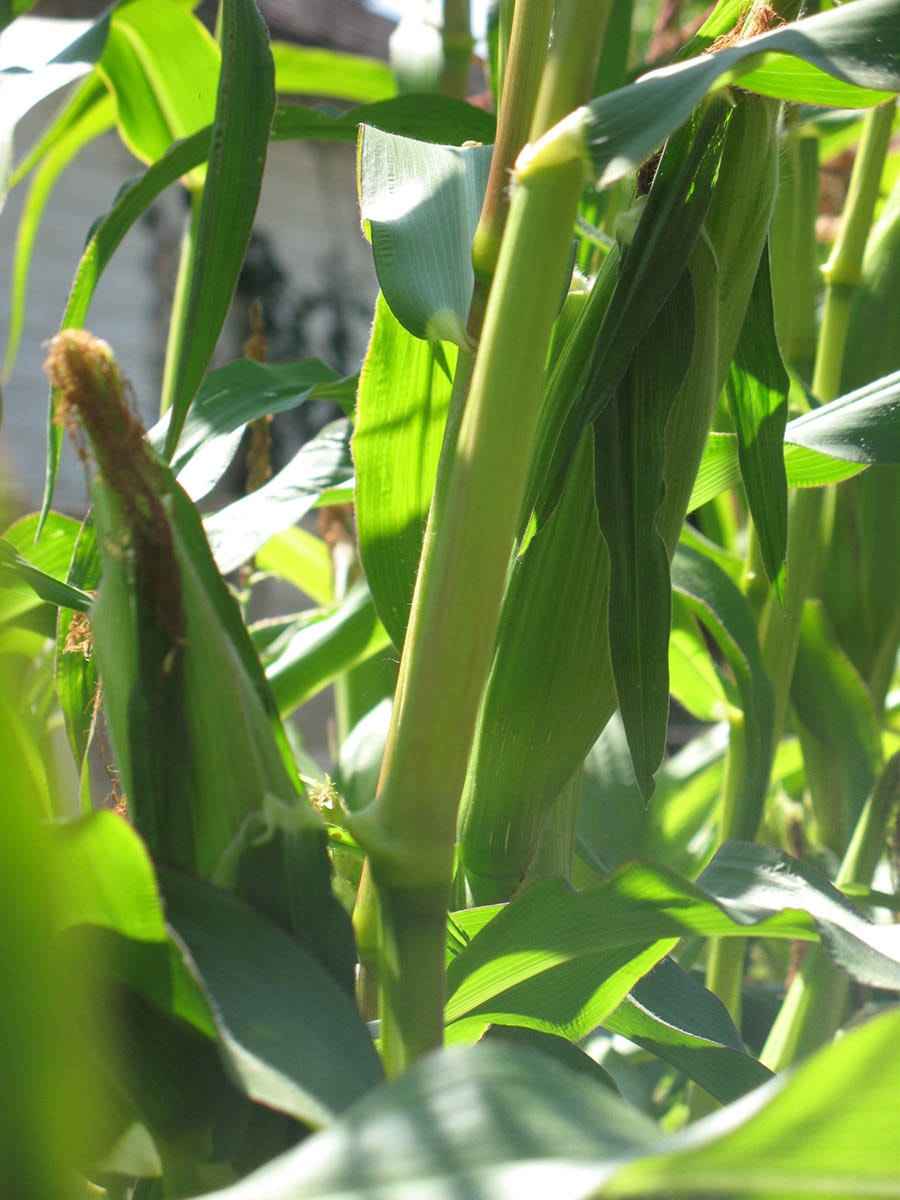By Mary Lowther
I got a pop up ad yesterday from Silver Rill farm advertising their new corn crop. I wrote them back and asked why they don’t grow the tasty, corny varieties they used to grow 30 years ago and they replied: “Commercial seed suppliers only have these super-sweet varieties available and besides, people really like this corn.”
All I can think is that the folks who buy this insipid, watery imitation don’t know any better because they’ve never tasted the real goods. We’re talking chewy, buttery, sweet without being cloying, corn that satisfies the palate so well that one doesn’t want dessert. In fact, when our corn ripens, we make a meal of just corn on the cob. I buy real corn seeds like Golden Bantam and Sunnyvee and grow them in our back yard.
Diet gurus warn us not to eat corn because, they say, it’s high glycemic, has too many lectins and it’s a relative newcomer to palates of non-Indigenous types and our digestive systems can’t handle it. But well-grown corn is rich in vitamin C, magnesium, B vitamins and carotenoids, and contains three grams of fibre per half cup. Yellow varieties have significantly higher levels of flavonoid antioxidants like carotenoids and vitamin A. One medium cob has 88 calories (without the butter, but what the heck, I slather on the butter anyway. As David says, “Corn is a perfect vector for butter).
Now that we’re nearing corn harvest season, let me give you a few tips. Don’t pull off any secondary stalks that sprout up because studies have shown that they do not suck energy from the main plant. In fact, removing them has been shown to decrease production on the main plant. Some of my side shoots have produced tiny ears that haven’t amounted to a hill of beans, but I just let them grow.
If earwigs invade the corn patch, they start with the silks that grow out of the ears and continue down to the kernels, so if you see this happening, try dabbing some mineral oil on the silks to deter them. Finally, winter squash that meanders can be grown alongside the patch and its vines encouraged to encircle the bed. Raccoons don’t touch my corn and it may be because these vines are covered in prickles, forming a formidable barrier.
My corn will be ready in a week or so. When corn is ready to harvest, don’t open the husk because that invites birds and insects. Instead, feel the end of the ear — if it still feels pointy and the husks are tight, it’s not ready yet. When the end feels full and flattened, and the husks are a bit looser, it’s ready.
Because I plant two consecutive batches, we’re eating fresh corn for about three weeks, then I allow the rest to dry on the stalk for next year’s seed and winter recipes, like this one that uses the unground, whole kernel:
Dried Corn Soup
2 cups dried corn
¼ lb. bacon
2 onions, chopped fine
1 quart milk or substitute
Black pepper and salt to taste
Directions: Soak corn overnight in enough water to cover. Next morning, simmer the corn in the same water until tender, adding more water as needed. Dice bacon and fry in a frying pan until golden brown, add onions and pepper and fry until onions are wilted. Add this and the milk to the soup pot and heat till good and hot. Salt to taste.
Please contact mary_lowther@yahoo.ca with questions and suggestions since I need all the help I can get.
